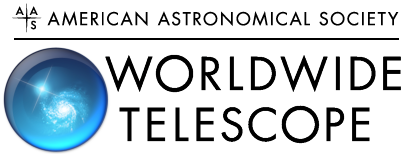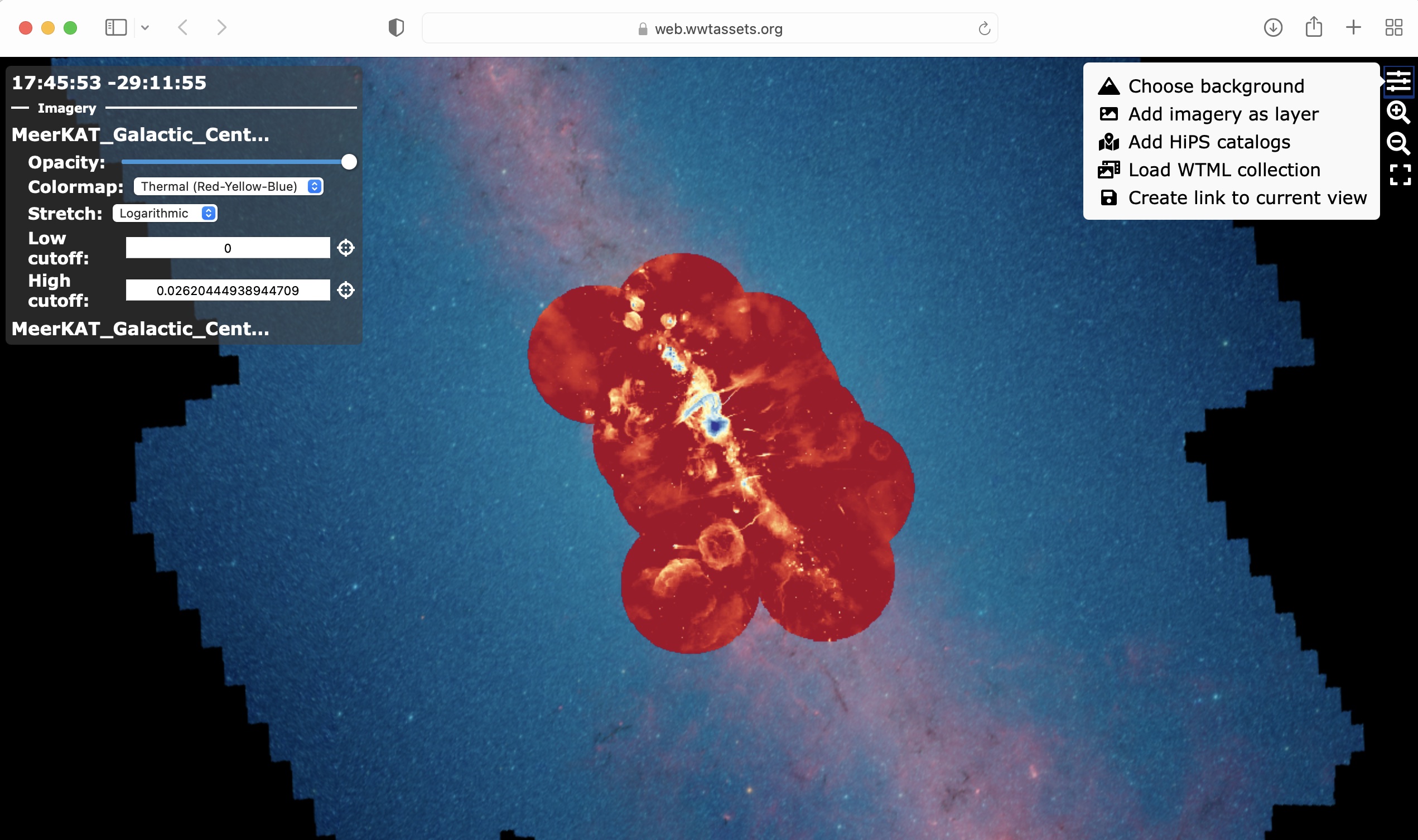Thousands of New Astronomical Images Highlighted in Latest Release of AAS WorldWide Telescope
 The American Astronomical Society (AAS) today launched WWT 2022, the latest version of AAS WorldWide Telescope (WWT), revealing new data and capabilities and providing an even more powerful astronomy visualization toolkit for astronomers, educators, and enthusiasts alike.
The American Astronomical Society (AAS) today launched WWT 2022, the latest version of AAS WorldWide Telescope (WWT), revealing new data and capabilities and providing an even more powerful astronomy visualization toolkit for astronomers, educators, and enthusiasts alike.
WWT isn't a physical telescope, but rather a suite of free and open-source software that integrates data and images from dozens of astronomical observatories and surveys, making it easy to explore the universe on a range of platforms including mobile phones, desktop computers, and state-of-the-art planetariums. With WWT, astronomy enthusiasts can enjoy stunning astronomical images like these astrophotographs by Gary Plummer, and researchers can explore and share rich datasets like this map of the Milky Way’s center from the MeerKAT radio telescope. And the newest edition of WWT brings users a host of new features.
“WWT 2022 wraps up several years’ worth of improvements to all aspects of WorldWide Telescope,” says Peter K. G. Williams, AAS Innovation Scientist and WWT Director. “We more than doubled the size of WWT's built-in datasets, integrating thousands of beautiful new astronomy images. But we also know there’s no dataset like your own, so we’ve expanded our tools to make it even easier for users to import their own data — whether you’re an amateur with your first astrophotograph or a researcher who wants to explore a gigapixel mosaic.”
The new features introduced in WWT 2022 include a “research app” for astronomy professionals that seamlessly integrates data analysis and visualization in the JupyterLab computing environment; support and tools to convert a wider variety of images and datasets into WWT’s formats; and new images and data, ranging from a 7-meter-per-pixel map of the Moon captured by the SELENE “Kaguya” Terrain Camera to MeerKAT’s stunning recent radio images of the heart of our galaxy. A new sharing app is also available for users to create interactive figures that can be put into iPosters or journal articles, or even to share interactive guided tours (like this Sky & Telescope tour of bright stars in the night sky).

“When the AAS assumed leadership of WWT from Microsoft in 2016, we were excited about the potential for this software to provide the community with new ways to visualize astronomical data,” says Julie Steffen, AAS Chief Publishing Officer. “The dramatic expansion of WWT’s capabilities in the last few years has made this tool even more valuable for astronomical researchers, while simultaneously providing an easy way to share the astronomical images, in context, with the broader public. In this way, WWT aligns well with the AAS’s mission to enhance and share scientific humanity’s scientific understanding of the universe.”
To get started with WWT, astronomy researchers can dive into tutorial notebooks that demonstrate the usage of the new WWT JupyterLab app. Educators may wish to explore WWT educational materials and lesson plans, or create their own guided tours starting from an ample library of built-in tours. And anyone can explore WWT’s rich imagery from their web browser or from the recently updated Windows client.
The new WWT 2022 also provides a range of programming interfaces that allow users to create interactive, WWT-powered applications in the Python and TypeScript programming languages. “One of the best things about WWT is that it does a ton of the hard work for you. You don't need to have an army of developers to build something really cool,” Williams points out. “There are uses for everyone — whether you're a professional or an amateur, a researcher or an educator, WWT 2022 provides a compelling new way to explore and share the universe.”
Contacts
Additional Information
- WorldWide Telescope
- WWT 2022 Description and Resources
- Video: WWT 2022 Trailer (2:07)
- Video: WWT 2022 Overview (8:52)
AAS WorldWide Telescope (WWT) is a free, open-source tool for visually exploring humanity’s scientific understanding of the universe. WWT is a .NET Foundation project. Work on WWT has been supported by the American Astronomical Society, the US National Science Foundation (grants 1550701, 1642446, 2004840), the Gordon and Betty Moore Foundation, and Microsoft.
The American Astronomical Society (AAS), established in 1899, is a major international organization of professional astronomers, astronomy educators, and amateur astronomers. Its membership of approximately 8,000 also includes physicists, geologists, engineers, and others whose interests lie within the broad spectrum of subjects now comprising the astronomical sciences. The mission of the AAS is to enhance and share humanity’s scientific understanding of the universe as a diverse and inclusive astronomical community, which it achieves through publishing, meetings, science advocacy, education and outreach, and training and professional development.


